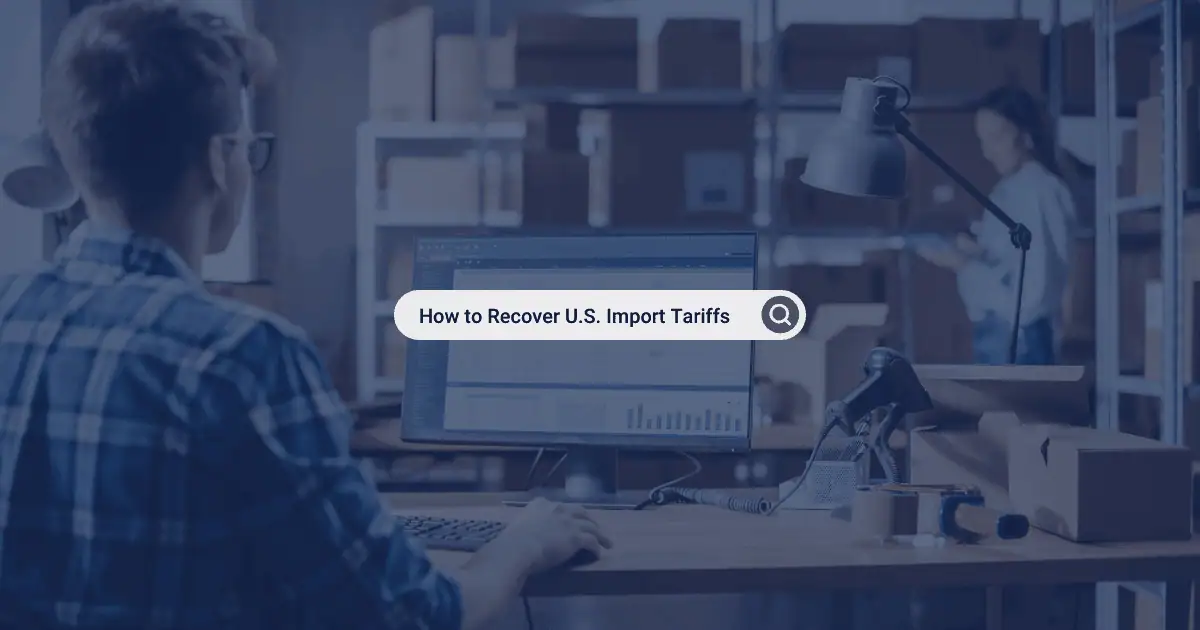For ecommerce brands paying rising U.S. import duties, duty drawback offers a way to recover up to 99% of those costs. Passport’s VP of Global Trade, Thomas Taggart, explores how businesses can leverage this program to reduce expenses, strengthen profitability, and stay competitive in global markets.
Rising tariffs and trade enforcement are reshaping the economics of international ecommerce. For brands importing into the U.S. and shipping globally, duty costs have climbed significantly—especially with reciprocal tariffs and de minimis exemptions phasing out, which once allowed duty-free treatment on low-value imports.
And the pressure is showing up in brand strategies. A July 2025 study conducted by Passport in collaboration with Drive Research found that 99% of senior US, UK, and Canadian-based ecommerce leaders say tariffs and trade shifts are affecting their peak season plans, with 81% calling the impact “strong.” The result? Seven in eight brands are raising prices to offset the costs. But higher prices in a competitive peak season environment can quickly erode conversion rates and push customers toward competitors.
Yet while many brands are responding by increasing prices or trying to minimize future duty exposure, few are looking backward to recover costs they’ve already paid. That’s where duty drawback comes in.
Duty drawback is a long-standing U.S. Customs program that allows importers to reclaim up to 99% of duties, fees, and tariffs on goods that are later exported, returned, or destroyed. Despite billions in refunds being eligible each year, the majority of eligible ecommerce brands never file a single claim.
In today’s trade environment, understanding duty drawback isn’t just a compliance advantage—it could be the key to protecting profit this peak season and beyond.

What’s Driving Duty Costs Higher in 2025
With Section 301 tariffs on Chinese goods, the phase-out of de minimis exemptions, IEEPA-based duties, and reciprocal tariffs of up to 50% taking effect in 2025, duty costs are reaching new highs for ecommerce importers. For some categories, total import fees can exceed 40–60% of the item’s value.
Yet many brands still fulfill international orders from U.S. warehouses. That means a portion of their inventory—when shipped to customers in Canada, the EU, the UK, or Australia—may qualify for a refund under U.S. duty drawback rules.
If you’re managing global returns, inventory transfers to overseas 3PLs, or product destruction, you may be eligible to recover significant duty costs from shipments you thought were already closed books.
Common Scenarios That Qualify for Duty Drawback
Not sure if your ecommerce business qualifies for duty drawback? These are four common situations where U.S. importers may be eligible to recover duties and fees:
- International fulfillment from U.S. warehouses
Inventory imported into the U.S. and shipped to customers abroad (e.g., in Canada, the UK, or Australia) may be eligible for unused merchandise drawback, provided the goods weren’t used domestically before export. - Returns from international customers
Items returned from U.S. customers to overseas locations may qualify for unused or destroyed merchandise drawback, depending on whether the product is re-exported or destroyed under CBP supervision. - Manufacturing with imported components
If your brand imports materials—such as ingredients or packaging materials—and exports finished goods, those shipments may qualify for manufacturing drawback. - Inventory transfers to international 3PLs
Moving unsold stock from a U.S. warehouse to a non-U.S. fulfillment center could qualify for unused merchandise drawback, so long as the export is properly documented.
Each of these scenarios offers a potential path to reclaim duties many ecommerce brands assume are lost. With a five-year window from the date of import to file a claim, your business may be sitting on sizable refunds without even realizing it.
Why Most Ecommerce Brands Miss Out on Duty Drawback
Every year, billions of dollars in refundable duties go unclaimed—especially by ecommerce brands. What’s getting in the way?
- Many brands don’t realize they qualify for duty drawback
- The process is seen as complex and documentation-heavy
- Legacy customs brokers prioritize large-scale manufacturers
- Ecommerce teams assume they’re “too small” or “didn’t track exports properly”
But here’s the reality: even modest export volumes—particularly in high-tariff categories like apparel, footwear, electronics, and cosmetics—can qualify for substantial duty refunds. And by working with an e-commerce-focused duty drawback provider, managing customs documentation and reconciliation is far more accessible than ever.
What’s Required to File a Duty Drawback Claim
To submit a duty drawback claim to U.S. Customs and Border Protection (CBP), ecommerce importers generally need:
- Entry records (typically CBP Form 7501)
- Export documentation (e.g., shipment records, tracking numbers, commercial invoices)
- Proof the goods were unused, unaltered, or destroyed
- An approved drawback privileges application from CBP
Brands can file directly or partner with a licensed customs broker specializing in duty drawback. Many modern providers offer AI-powered data matching, audit-ready documentation, and contingency-based services—meaning there’s no upfront cost and no payment unless your refund is successfully recovered.
Using Duty Drawback to Boost Profitability
Duty drawback isn’t a loophole—it’s a long-standing U.S. trade program designed to protect importers from double taxation when goods leave the country. In today’s volatile tariff environment, it remains one of the few tools that can directly improve margins for ecommerce businesses.
Whether you’re fulfilling international orders, processing global returns, or reallocating inventory across warehouses, drawback turns sunk costs into recoverable capital. It’s a strategic way for ecommerce brands to improve cash flow, reinvest in growth, and maintain price competitiveness in global markets.
With peak season approaching and trade policies still shifting, now is the time for ecommerce brands to revisit past imports and explore refund eligibility—before the busiest quarter begins.
This article is provided for informational purposes only and does not constitute legal advice. Merchants are advised to consult with their customs broker and legal counsel to ensure compliance with all applicable laws and regulations based on their specific circumstances.
Authored by Thomas Taggart
Head of Global Trade | Passport
Thomas Taggart is a cross-border commerce leader with more than 20 years of experience in international shipping and regulatory affairs. As the Head of Global Trade, Thomas helps ecommerce brands go global by simplifying international trade, tax, and product compliance issues. Prior to Passport, he brought international shipping solutions to market through multiple roles in UPS’s product development organization.











